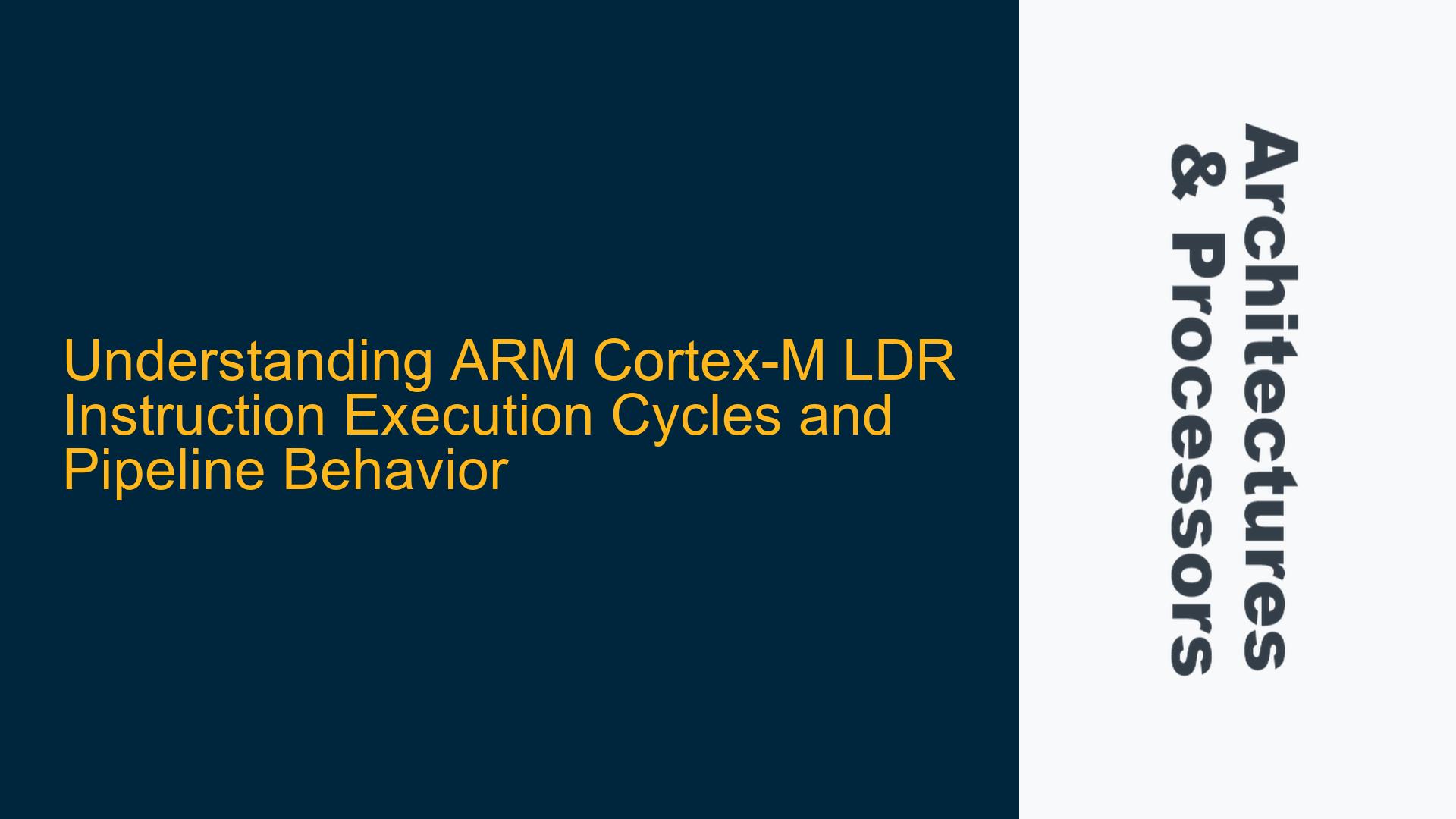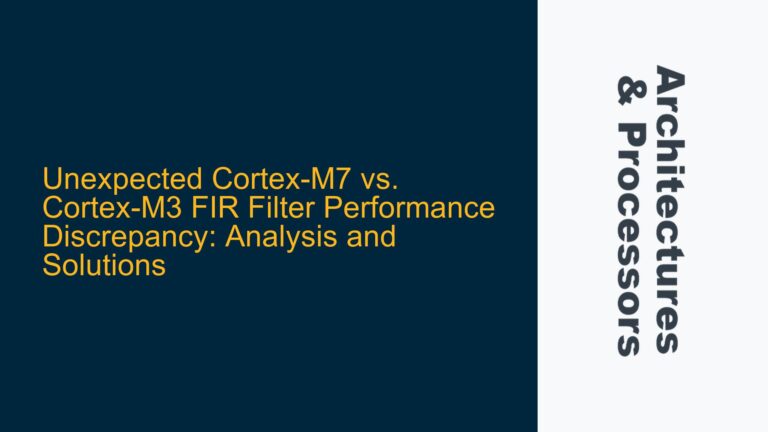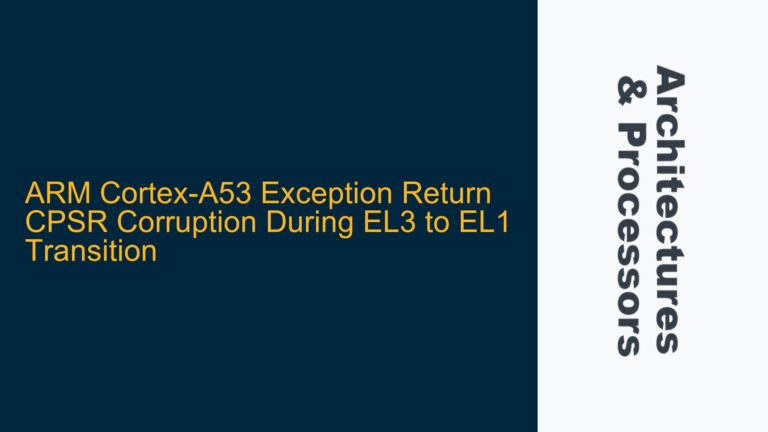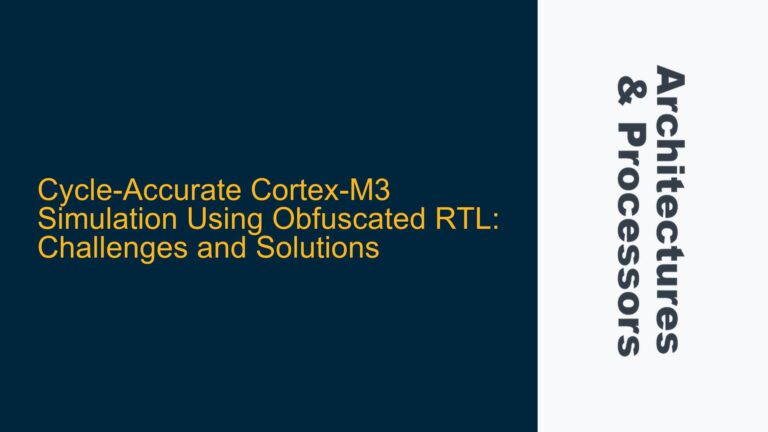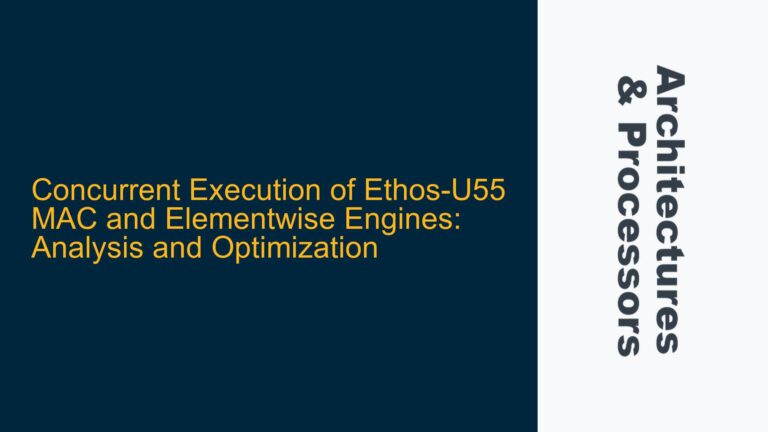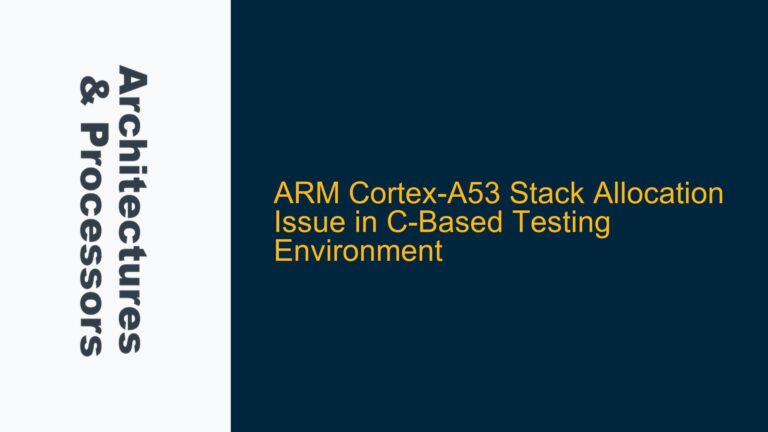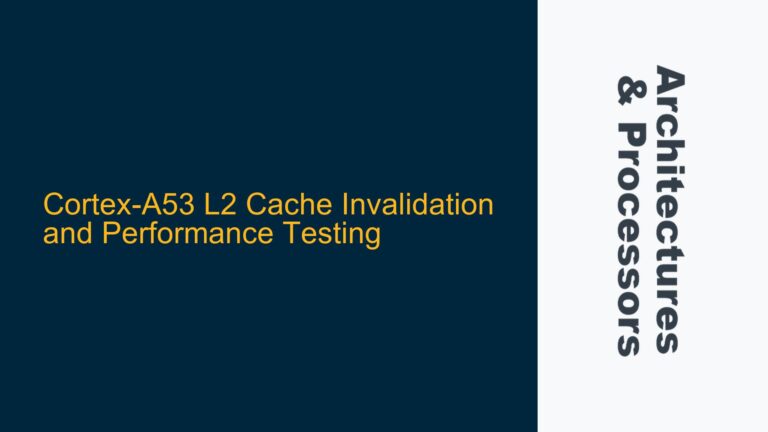Cortex-M0 and Cortex-M3/M4 LDR Instruction Execution Cycles
The execution of the LDR (Load Register) instruction on ARM Cortex-M processors, particularly the Cortex-M0 and Cortex-M3/M4, involves a detailed interplay between the processor’s pipeline stages and the memory subsystem. The Cortex-M0, being a simpler processor, has a straightforward 3-stage pipeline: Fetch, Decode, and Execute. The Cortex-M3 and Cortex-M4, while also having a 3-stage pipeline, incorporate additional optimizations that affect the execution time of the LDR instruction.
In the Cortex-M0, the LDR instruction takes two cycles to execute. This is due to the pipeline nature of the AHB (Advanced High-performance Bus) protocol, which is used for memory access. During the Execute stage, the processor initiates the memory access, but due to the pipelined nature of the AHB bus, the data transfer completes one cycle later. This results in a pipeline stall for one cycle, making the total execution time two cycles.
In contrast, the Cortex-M3 and Cortex-M4 also take two cycles for the LDR instruction, but for slightly different reasons. The address generation for the LDR instruction occurs in the first cycle of the Execute stage, and the data is read in the next cycle. The Cortex-M3 and Cortex-M4 can handle multiple load/store operations more efficiently by detecting subsequent memory accesses and generating addresses in parallel. However, for a single LDR instruction, the execution still takes two cycles.
Pipeline Stalls and Bus Protocol Impact on LDR Execution
The execution time of the LDR instruction is heavily influenced by the pipeline architecture and the bus protocol used for memory access. In the Cortex-M0, the pipeline stall occurs because the memory access cannot be completed within the same cycle as the address generation. The AHB bus protocol, being pipelined, requires an additional cycle to complete the data transfer, leading to a one-cycle stall.
In the Cortex-M3 and Cortex-M4, the address generation is handled combinatorially, meaning that the address is generated and output to the bus immediately without an additional cycle. However, the data read operation still takes an additional cycle, resulting in a two-cycle execution time for the LDR instruction. The Cortex-M3 and Cortex-M4 also feature a write buffer for store operations, allowing the processor to continue executing the next instruction while the data is being written to memory. This optimization reduces the effective execution time of store instructions to one cycle, but does not apply to load instructions.
The following table summarizes the execution cycles for the LDR instruction across different Cortex-M processors:
| Processor | Pipeline Stages | LDR Execution Cycles | Reason for Additional Cycle |
|---|---|---|---|
| Cortex-M0 | Fetch, Decode, Execute | 2 | AHB bus protocol requires an additional cycle for data transfer |
| Cortex-M3/M4 | Fetch, Decode, Execute | 2 | Address generation in first cycle, data read in second cycle |
Optimizing LDR Instruction Execution and Understanding Trade-offs
To optimize the execution of the LDR instruction, it is important to understand the trade-offs involved in the pipeline and bus architecture. In the Cortex-M0, the pipeline stall is unavoidable due to the simplicity of the pipeline and the AHB bus protocol. However, in the Cortex-M3 and Cortex-M4, the combinatorial address generation allows for more efficient handling of multiple load/store operations.
One key optimization in the Cortex-M3 and Cortex-M4 is the ability to detect subsequent memory accesses and generate addresses in parallel. This means that if multiple LDR instructions are executed back-to-back, the processor can overlap the address generation and data read operations, reducing the overall execution time. For example, if N LDR instructions are executed consecutively, the total execution time would be N+1 cycles, rather than 2N cycles.
Another important consideration is the use of the write buffer in the Cortex-M3 and Cortex-M4. While this optimization does not directly affect the LDR instruction, it highlights the importance of understanding the memory subsystem and how it interacts with the pipeline. By leveraging the write buffer, store instructions can be executed more efficiently, allowing the processor to continue executing subsequent instructions without waiting for the data to be written to memory.
In conclusion, the execution time of the LDR instruction on ARM Cortex-M processors is determined by the pipeline architecture and the memory bus protocol. The Cortex-M0 requires two cycles due to a pipeline stall caused by the AHB bus protocol, while the Cortex-M3 and Cortex-M4 also require two cycles but benefit from combinatorial address generation and the ability to handle multiple memory accesses more efficiently. Understanding these details is crucial for optimizing code execution and making informed design decisions when working with ARM Cortex-M processors.
